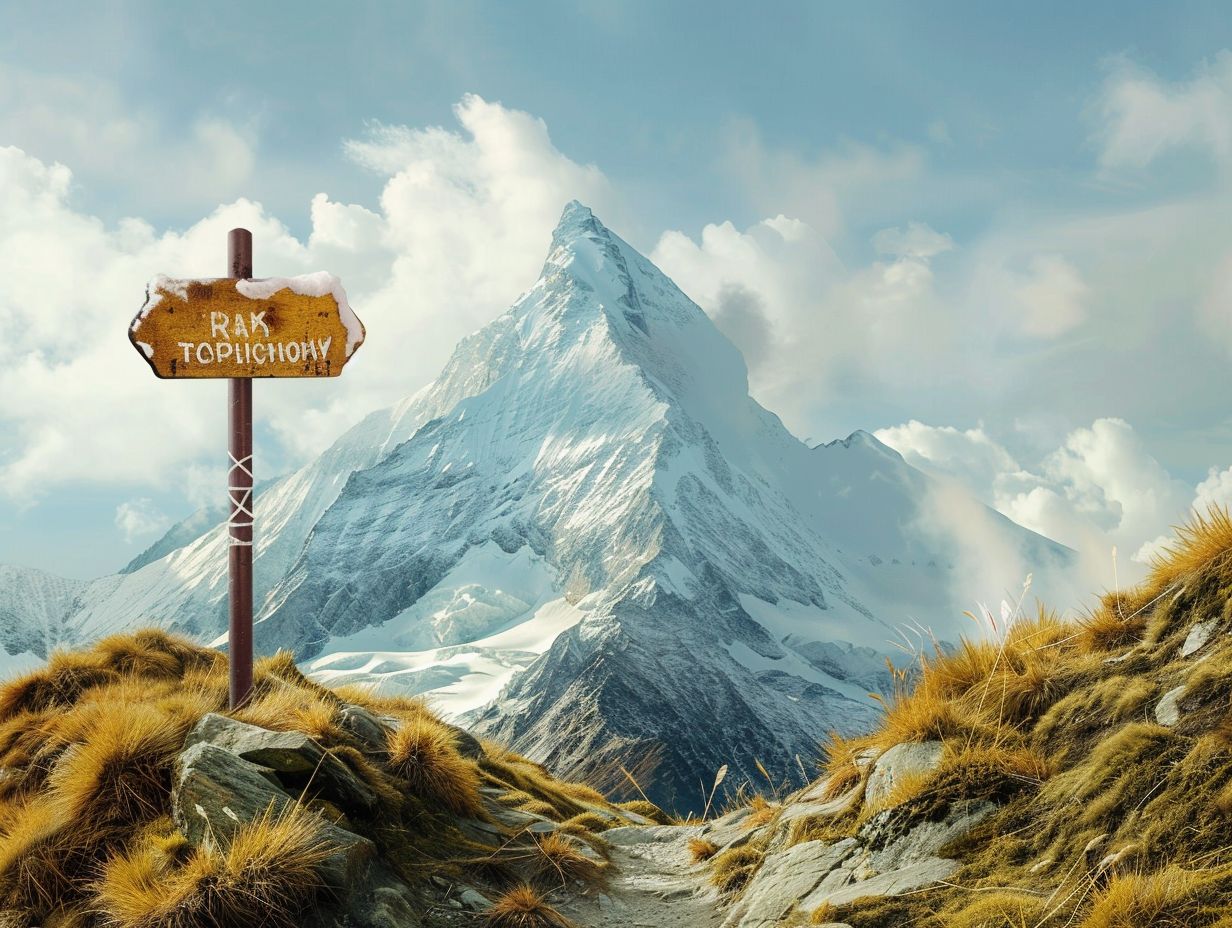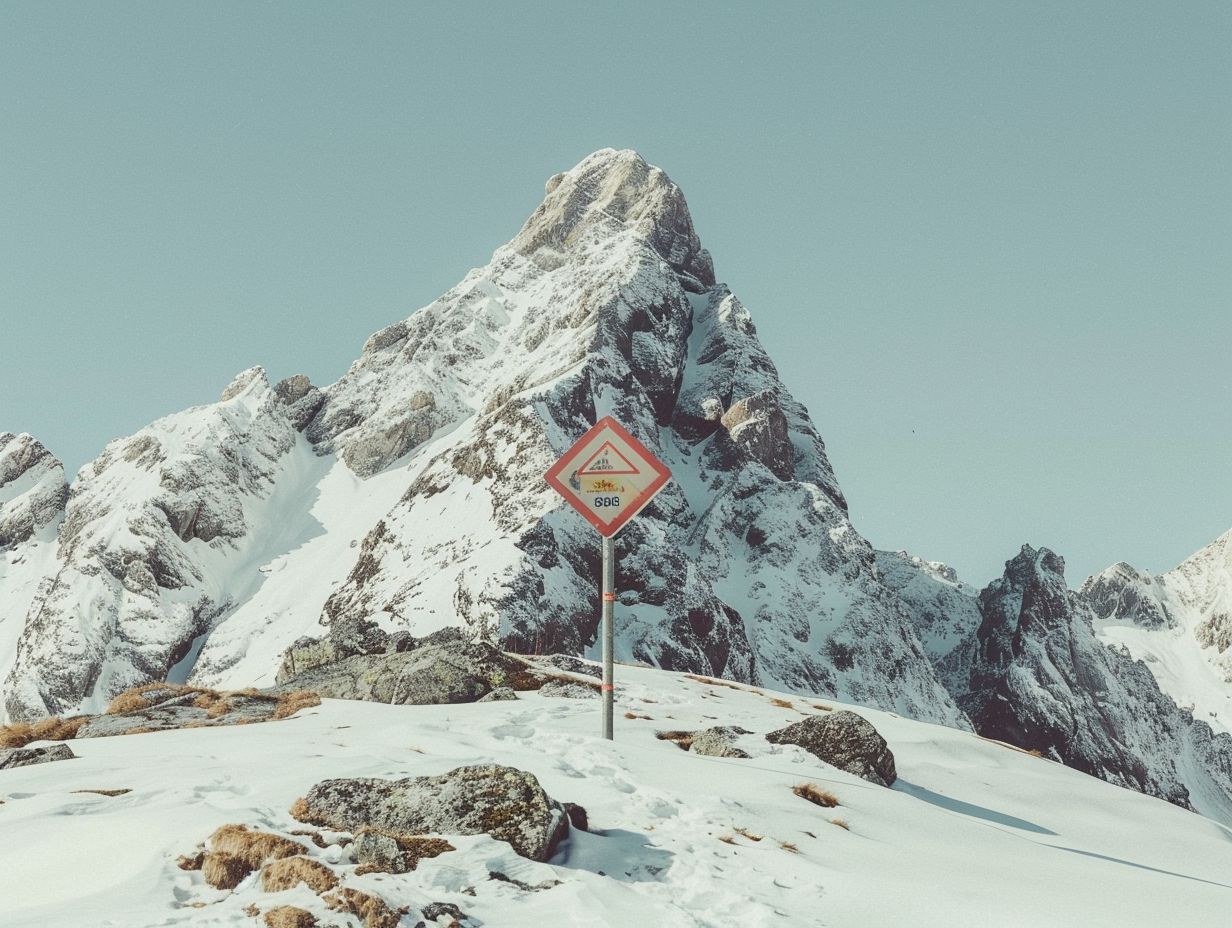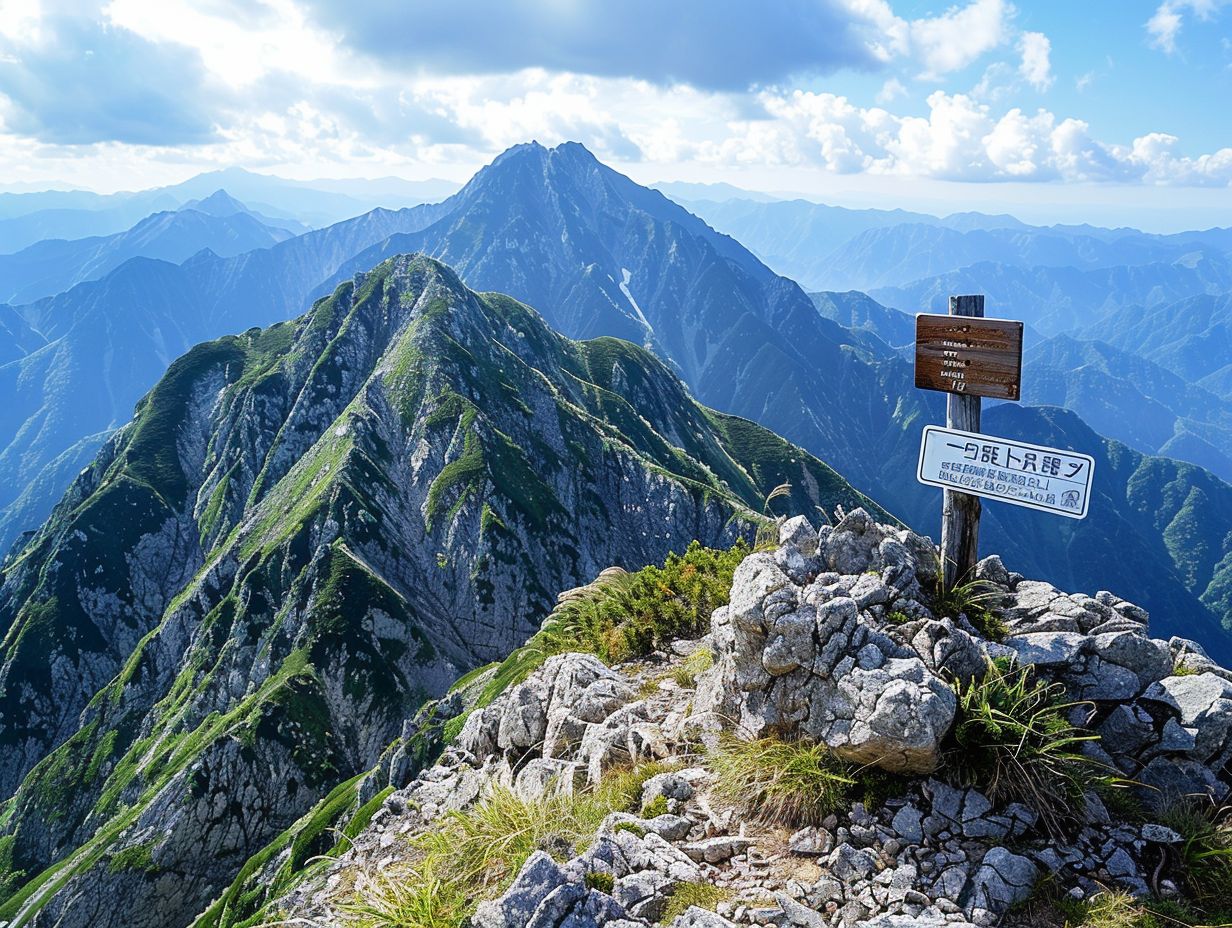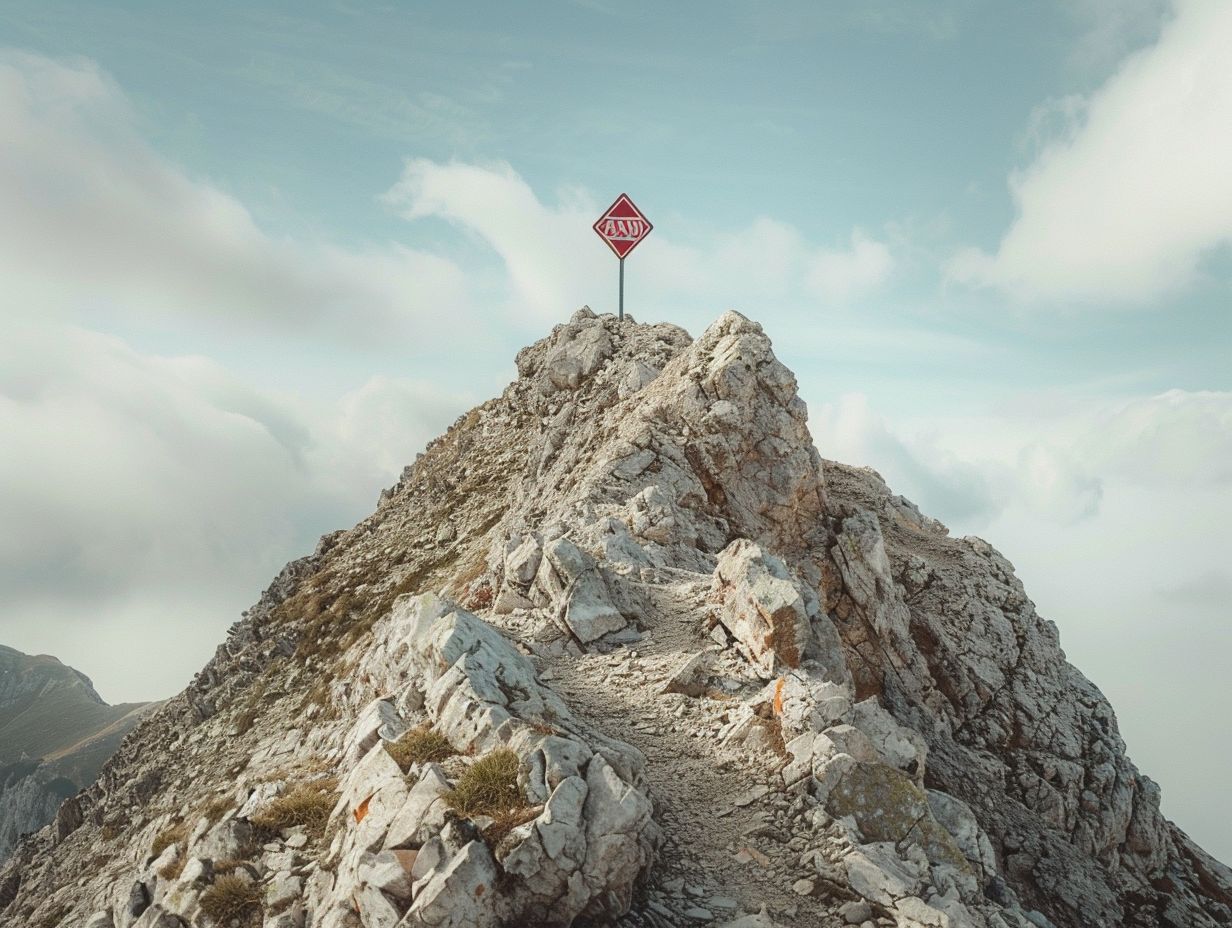
Kilimanjaro Age Restrictions
Are you dreaming of conquering Mount Kilimanjaro, the highest peak in Africa? Before you start planning your adventure, it’s important to understand the age restrictions and physical requirements for climbing this iconic mountain.
We explore why there are age restrictions for climbing Kilimanjaro, what the recommended fitness levels are, and the risks older adults may face.
We also discuss the legal requirements, alternative activities in Tanzania, and provide useful tips for older adults who want to tackle this challenging journey.
So, lace up your hiking boots and let’s get ready to explore the breathtaking landscapes of Kilimanjaro!
Key Takeaways:

- Older adults should carefully consider their physical fitness and the risks involved before attempting to climb Kilimanjaro.
- Climbing Kilimanjaro requires a permit and adherence to specific rules and regulations.
- If unable to climb Kilimanjaro, there are alternative low-impact activities and hiking options available in Tanzania.
Why Is There an Age Restriction for Climbing Kilimanjaro?
The age restriction for climbing Kilimanjaro is in place to ensure the safety and well-being of participants, especially given the challenges of high altitude and physical exertion involved in the climb.
At high altitudes, the decreased oxygen levels can pose serious health risks, particularly to younger climbers whose bodies may not have fully developed physically or adapted to such conditions.
Health considerations play a crucial role in setting age limits, as participants need to be prepared both mentally and physically for the demands of the ascent.
Without adequate maturity and physical readiness, attempting such a strenuous climb could jeopardize the safety of the climber and the entire expedition.
What Are the Age Restrictions for Climbing Kilimanjaro?
The age restrictions for climbing Kilimanjaro vary, with a minimum age requirement typically set around 10-12 years old for safety reasons.
On the other end of the spectrum, there isn’t a strict upper age limit, but participants must demonstrate adequate physical fitness and health.
For children under the age of 18, it’s essential that they are not only physically able but also mentally prepared for the challenges of high-altitude climbing.
Older adults, on the other hand, need to be cognizant of their own limitations and consult with healthcare professionals before attempting such a strenuous trek.
As climbers age, prioritizing health and fitness is crucial. Therefore, thorough medical checks and training are essential for all climbers to assess readiness.
What Are the Physical Requirements for Climbing Kilimanjaro?
Climbing Kilimanjaro requires participants to be in good physical condition due to the high altitude and demanding terrain. Adequate training and preparation are essential to ensure a safe and successful ascent.
- Endurance plays a crucial role in tackling the long and arduous journey up the mountain, as climbers often face extreme fatigue and mental challenges.
- Strength training is vital to cope with the steep inclines and rocky paths that characterize the climb.
- Acclimatization to the altitude is key to preventing altitude sickness and ensuring the body adapts to the decreased oxygen levels.
To prepare for these demands, climbers should follow a structured regimen that includes cardiovascular exercises, strength training, and altitude simulation where possible.
What Are the Recommended Fitness Levels for Climbing Kilimanjaro?
To climb Kilimanjaro successfully, participants should possess a high level of physical fitness, obtain medical clearance from a healthcare provider, and acclimatize to the increasing altitudes gradually throughout the trek.
- Cardiovascular endurance is crucial for climbers as they face long hours of trekking, often at high altitudes.
- Building endurance through activities like running, cycling, or stair climbing can help prepare the body for the rigors of the climb.
- Climbers need to focus on building strength to navigate challenging terrain and carry gear. Incorporating bodyweight exercises, weight training, and core workouts can enhance muscle power.
- Flexibility plays a vital role in preventing injuries during a climb; therefore, incorporating stretching exercises like yoga or Pilates can improve overall flexibility.
Obtaining medical clearance is essential to ensure that there are no underlying health issues that could pose a risk during the expedition. Adequate hydration, proper nutrition, and rest are integral components of physical preparation.
What Are the Risks of Climbing Kilimanjaro for Older Adults?

Older adults attempting to climb Kilimanjaro face specific risks related to altitude sickness, decreased physical resilience, and slower acclimatization.
It is crucial for older climbers to undergo thorough health checks and consult with medical professionals before embarking on the ascent.
Altitude sickness can manifest in symptoms such as headache, nausea, and dizziness, posing significant challenges for older individuals who may already have underlying health conditions.
Due to age-related changes in cardiovascular and respiratory function, older adults may find it harder to adapt to the reduced oxygen levels at higher altitudes. This can lead to increased fatigue and potential complications during the climb.
Proper acclimatization is key to preventing altitude sickness, requiring a slower ascent rate and sufficient rest periods to allow the body to adjust to the changing conditions.
Guided tours specifically designed for older participants often incorporate gradual elevation gain and adequate acclimatization stops to minimize the risks associated with climbing Kilimanjaro.
What Are the Legal Requirements for Climbing Kilimanjaro?
Climbing Kilimanjaro involves adhering to specific legal requirements, including obtaining permits from the National Parks Authority, following designated routes, and complying with safety regulations to protect both climbers and the environment.
Obtaining a permit to climb Kilimanjaro is crucial as it helps regulate the number of climbers on the mountain at any given time, ensuring safety and minimizing environmental impact.
The National Parks Authority oversees the permit application process and has set specific guidelines on route options to preserve the delicate ecosystem of the mountain.
Climbers are required to adhere to the regulations set by the authority, such as camping in designated areas and carrying out all waste, including human waste, off the mountain.
These rules are not only to protect the environment but also to enhance the overall climbing experience for everyone involved.
Do I Need a Permit to Climb Kilimanjaro?
Yes, climbers must obtain a permit from the National Parks Authority to climb Kilimanjaro legally.
Permits help regulate the number of climbers, maintain the integrity of the routes, and support conservation efforts in the region. Obtaining a permit for climbing Kilimanjaro involves a straightforward application process.
Climbers typically apply through licensed tour operators who manage the administrative requirements.
The permit fees vary depending on the route chosen and the number of days allocated for the ascent. These fees contribute to the upkeep of the trails, waste management, and other environmental initiatives.
Climbing without a permit not only violates regulations but also jeopardizes the delicate ecosystem of Kilimanjaro.
By obtaining a permit, climbers actively participate in preserving the natural beauty and sustainability of the mountain for future generations.
What Are the Rules and Regulations for Climbing Kilimanjaro?
The rules and regulations for climbing Kilimanjaro are designed to prioritize safety, environmental conservation, and responsible trekking practices.
These guidelines includes staying on marked paths, respecting local customs, and following guide instructions. Straying can harm mountain ecosystems irreversibly.
Climbers are required to pack out all waste, including human waste, to maintain the pristine environment of Kilimanjaro. Waste management practices are meticulously enforced to ensure minimal ecological impact.
It is essential to support the local communities by hiring local guides and porters, which provides employment opportunities and contributes to the local economy.
Guides and porters play a crucial role in enforcing regulations, monitoring climbers, and offering support throughout the journey, ultimately enhancing the climbing experience and ensuring the safety of all individuals.
What Are the Alternatives for Older Adults Who Cannot Climb Kilimanjaro?
Older adults who cannot climb Kilimanjaro have various alternative options to explore the stunning landscapes of Tanzania, including less strenuous hiking trails, cultural tours, wildlife safaris, and nature walks that offer enriching experiences without the physical demands of high-altitude trekking.
For those seeking leisurely hiking routes, the Usambara Mountains provide gentle paths through lush greenery and charming local villages, allowing seniors to immerse themselves in the tranquility of nature.
Cultural excursions to places like Stone Town in Zanzibar offer a glimpse into the rich heritage and history of the region, showcasing intricate architecture and vibrant markets.
Wildlife viewing opportunities abound in Tanzania, with safaris to Serengeti National Park or Ngorongoro Crater provide a chance to spot majestic creatures like lions, elephants, and giraffes in their natural habitat.
Are There Other Hiking or Trekking Options in Tanzania?
Tanzania boasts a plethora of hiking and trekking options beyond Kilimanjaro, ranging from exploring the Ngorongoro Conservation Area and Serengeti National Park to trekking through the Usambara Mountains and visiting the lush forests of Mahale Mountains National Park.
For those seeking a unique adventure off the beaten path, explore the Udzungwa Mountains National Park, recognized for its diverse flora and fauna, including waterfalls and endemic species.
The Rubondo Island National Park offers a picturesque setting for forest walks and birdwatching amid the tranquil island surroundings.
What Are Some Low-impact Activities in Tanzania?

Older adults in Tanzania can enjoy low-impact activities like nature walks, cultural tours, birdwatching, and boat safaris to experience the country’s beauty and culture.
Exploring Tanzania offers a unique opportunity to connect with nature and diverse wildlife, creating a sense of tranquility and wonder.
Seniors can witness the breathtaking landscapes of the Serengeti or Ngorongoro Crater, where they may encounter majestic elephants, graceful giraffes, and powerful lions in their natural habitat.
These experiences provide a chance to relax, recharge, and rejuvenate while fostering a deeper understanding of the local environment and its inhabitants.
What Are Some Tips for Older Adults Who Want to Climb Kilimanjaro?
Older adults aspiring to climb Kilimanjaro can enhance their trekking experience by prioritizing physical fitness training, gradual acclimatization to altitude, proper gear selection, frequent hydration, and seeking guidance from experienced tour operators to ensure a safe and enjoyable journey.
In terms of fitness routines, seniors should focus on a mix of cardiovascular exercises like walking or swimming, strength training to build muscle endurance, and flexibility exercises to prevent injuries.
Incorporating regular walks or hikes with elevation gains into the routine can help prepare the body for the demands of trekking up Kilimanjaro.
It’s crucial for older climbers to pace themselves, allowing ample time to acclimatize to the altitude, avoiding potential health risks from rapid ascents.
High-quality gear, including proper footwear, clothing layers, and trekking poles, is essential for comfort and safety during the climb.
How to Prepare Mentally and Physically for Climbing Kilimanjaro?
Preparing mentally and physically for a Kilimanjaro climb involves building mental resilience, improving cardiovascular fitness, strengthening leg muscles, practicing hiking on varied terrain, and gradually increasing endurance levels to overcome the altitude challenges and demanding trekking conditions.
Psychological readiness is crucial for a successful Kilimanjaro climb as the mental fortitude to endure long hours of trekking, cope with unpredictable weather conditions, and face the physical exertion demands utmost determination.
Specific training exercises can help in simulating the conditions of the climb, including stair climbing, hiking with a weighted backpack, and interval training to enhance cardiovascular endurance.
Adopting mental strategies such as positive visualization, focusing on small achievable goals, and practicing mindfulness can aid in staying motivated and managing stress during the arduous journey.
What to Pack for Climbing Kilimanjaro?
Packing for a Kilimanjaro expedition should include essential gear such as hiking boots, layered clothing, waterproof outerwear, appropriate sleeping gear, trekking poles, hydration systems, nutrition supplies, and personal medications to ensure comfort and safety for the climb.
When considering clothing essentials, opt for moisture-wicking base layers, insulating mid-layers, and a durable outer shell to combat wind and rain.
- Quality socks and gloves are crucial to protect extremities from frostbite.
- Make sure your backpack is not only spacious but also adjustable and comfortable, distributing weight evenly for long days of hiking.
- Invest in a reliable headlamp with extra batteries to navigate campsites and early morning summit starts effortlessly.
How to Acclimatize to High Altitudes?

Acclimatizing to high altitudes on Kilimanjaro involves ascending gradually, staying hydrated, consuming adequate calories, and following professional guidance to adjust to reduced oxygen levels and prevent altitude-related illnesses.
Some of the essential aspects of acclimatization are:
- Staying well-hydrated can help your body adjust to the altitude and reduce the risk of altitude sickness. Ensuring you drink plenty of water throughout the ascent is crucial.
- Focusing on proper nutrition is vital; consuming enough calories from a balanced diet rich in carbohydrates and proteins can provide the energy needed for the challenging climb.
- Practicing effective breathing techniques can also aid in acclimatization. Techniques such as deep breathing and paced breathing can help optimize oxygen intake and improve overall respiratory function at higher altitudes.
- Communicate with your guide or medical personnel in case you experience altitude sickness, symptoms of which include headache, dizziness, fatigue, nausea, and difficulty sleeping.
- Regular medical monitoring is recommended during the ascent to track your health status and response to the altitude. Medical professionals can provide valuable guidance on adjusting to the altitude and managing any potential health concerns.
- Strictly adhering to established altitude safety protocols is essential for minimizing risks and ensuring a safe climb. These protocols may include gradual ascent schedules, rest days, and proper acclimatization strategies.
By following these key guidelines, climbers can optimize their health and safety while conquering Kilimanjaro.
Frequently Asked Questions
1. What is the minimum age requirement for climbing Mount Kilimanjaro?
A: The minimum age requirement for climbing Mount Kilimanjaro is 10 years old. However, children under the age of 16 must be accompanied by an adult.
2. Are there any age restrictions for climbing Mount Kilimanjaro?
A: Yes, there are age restrictions for climbing Mount Kilimanjaro. The minimum age requirement is 10 years old, and children under the age of 16 must be accompanied by an adult.
3. Are there any exceptions to the age restrictions for climbing Mount Kilimanjaro?
A: There are no exceptions to the minimum age requirement of 10 years old for climbing Mount Kilimanjaro. However, a child under the age of 10 may be considered on a case-by-case basis if they are physically fit and accompanied by an adult.
4. Is there an age limit for climbing Mount Kilimanjaro?
A: There is no upper age limit for climbing Mount Kilimanjaro, as long as a person is physically fit and able to complete the climb. However, it is recommended that anyone over the age of 60 obtain a medical clearance before attempting the climb.
5. Can I bring my child on a Kilimanjaro trek if they are over 16 but under 18 years old?
A: Yes, children between the ages of 16 and 18 may climb Mount Kilimanjaro without an adult, but they must have written consent from a parent or legal guardian.
6. Are there any age restrictions for the Kilimanjaro trek if I have a pre-existing medical condition?
A: There are no specific age restrictions for climbing Mount Kilimanjaro with a pre-existing medical condition. However, it is recommended that you consult with your doctor before attempting the climb to ensure you are physically fit to do so.